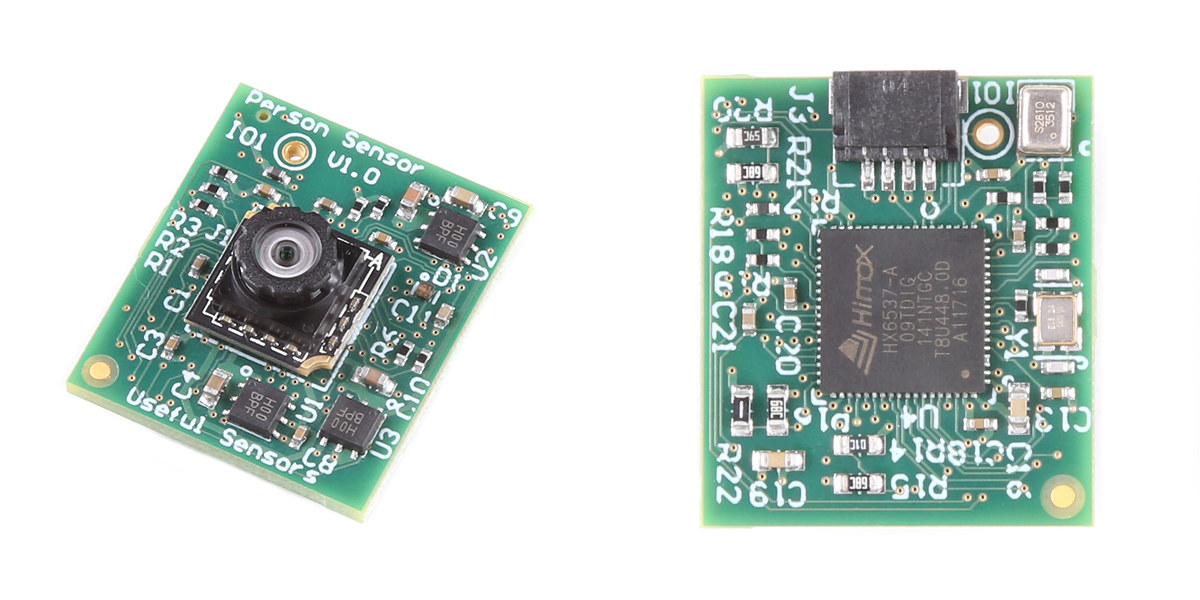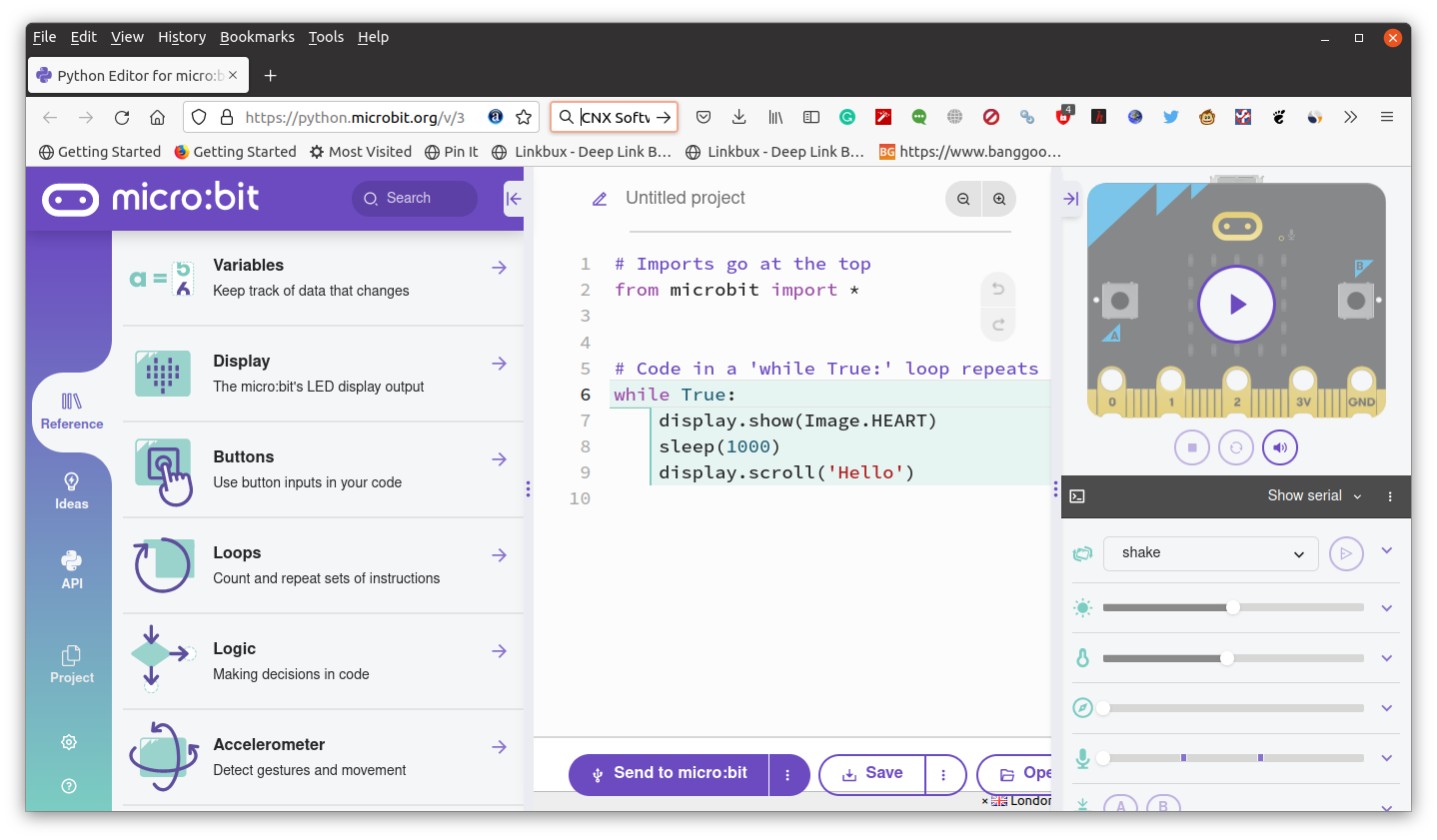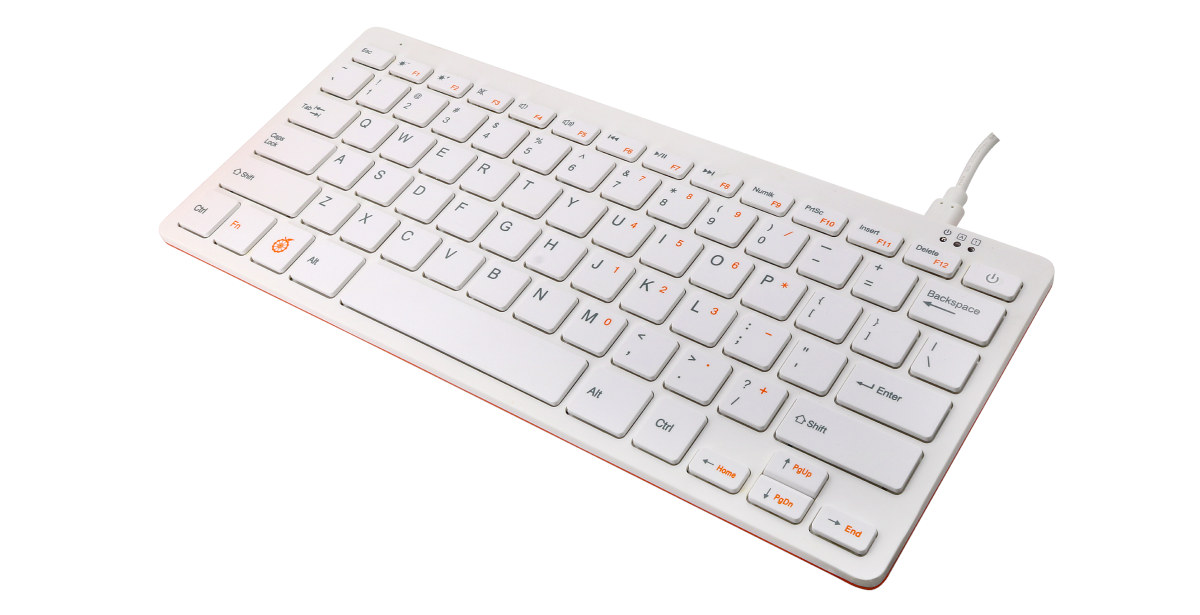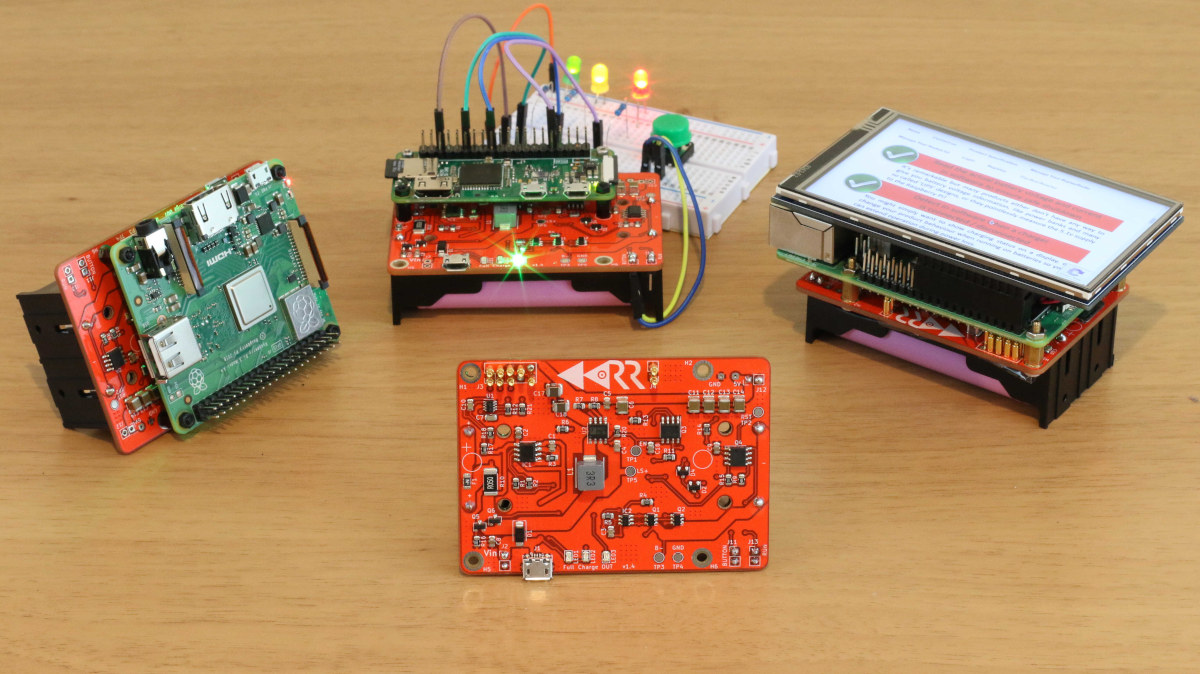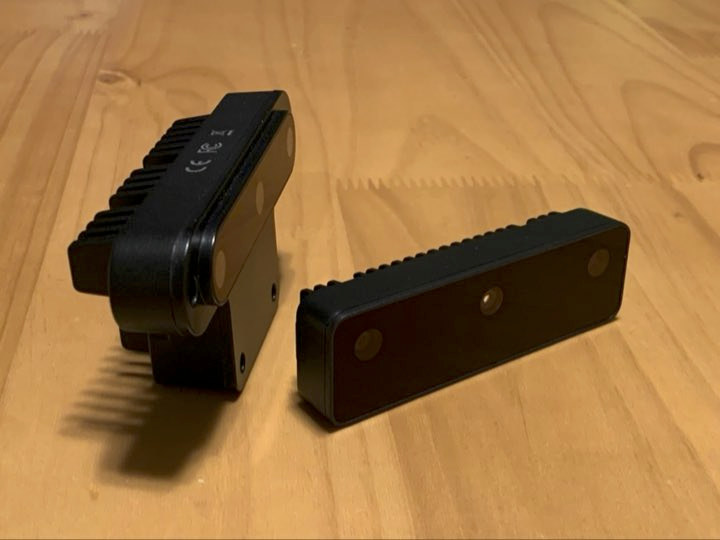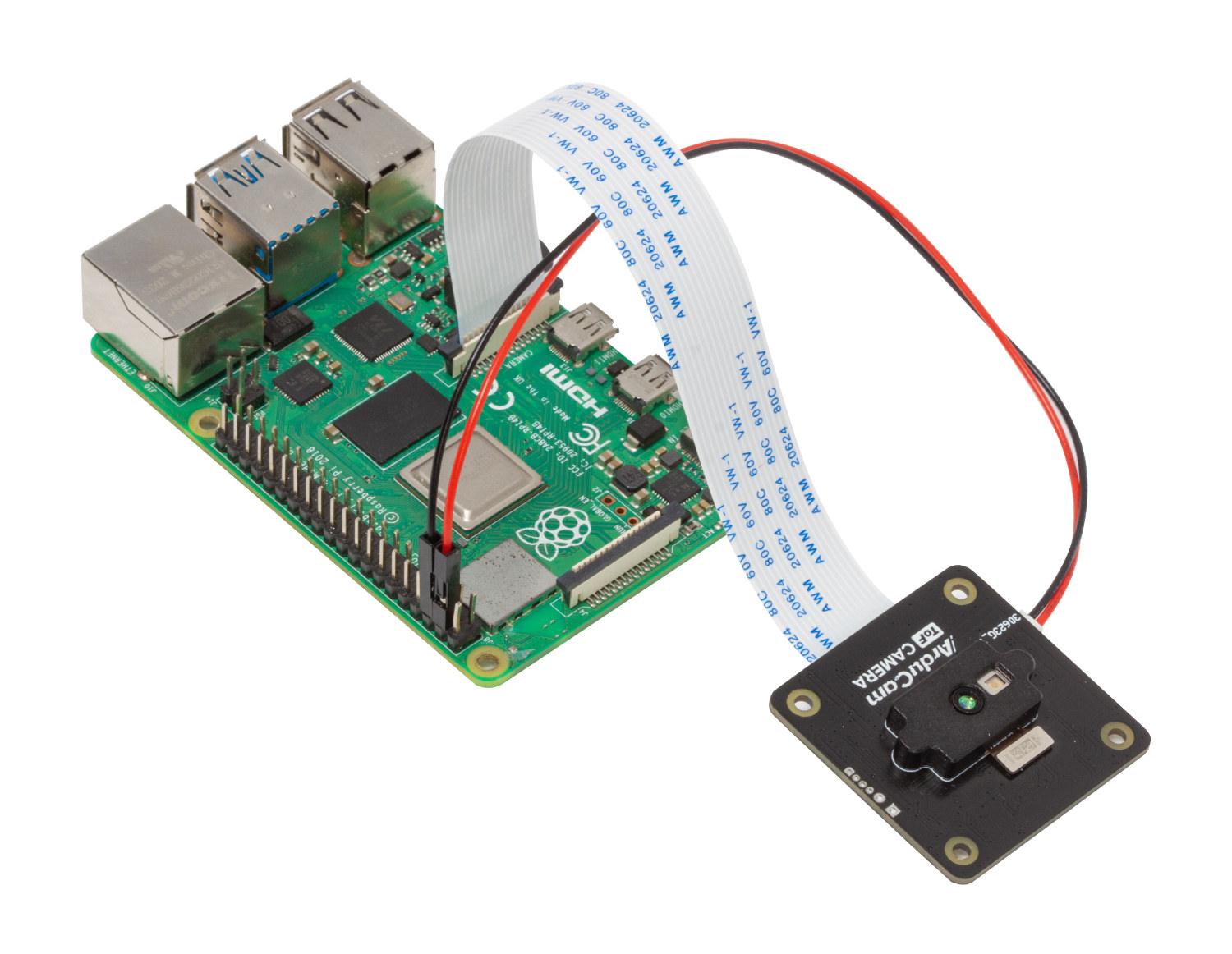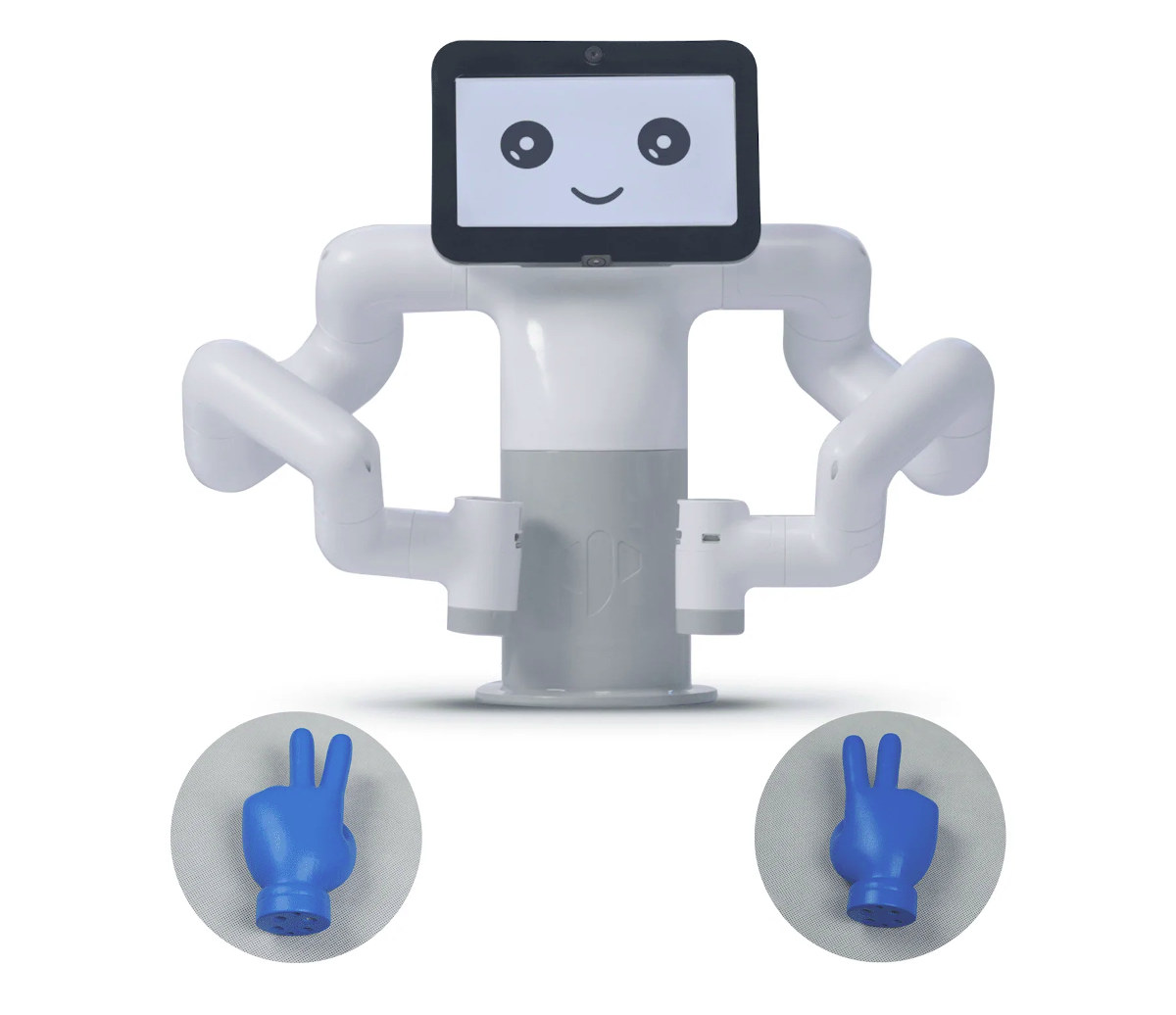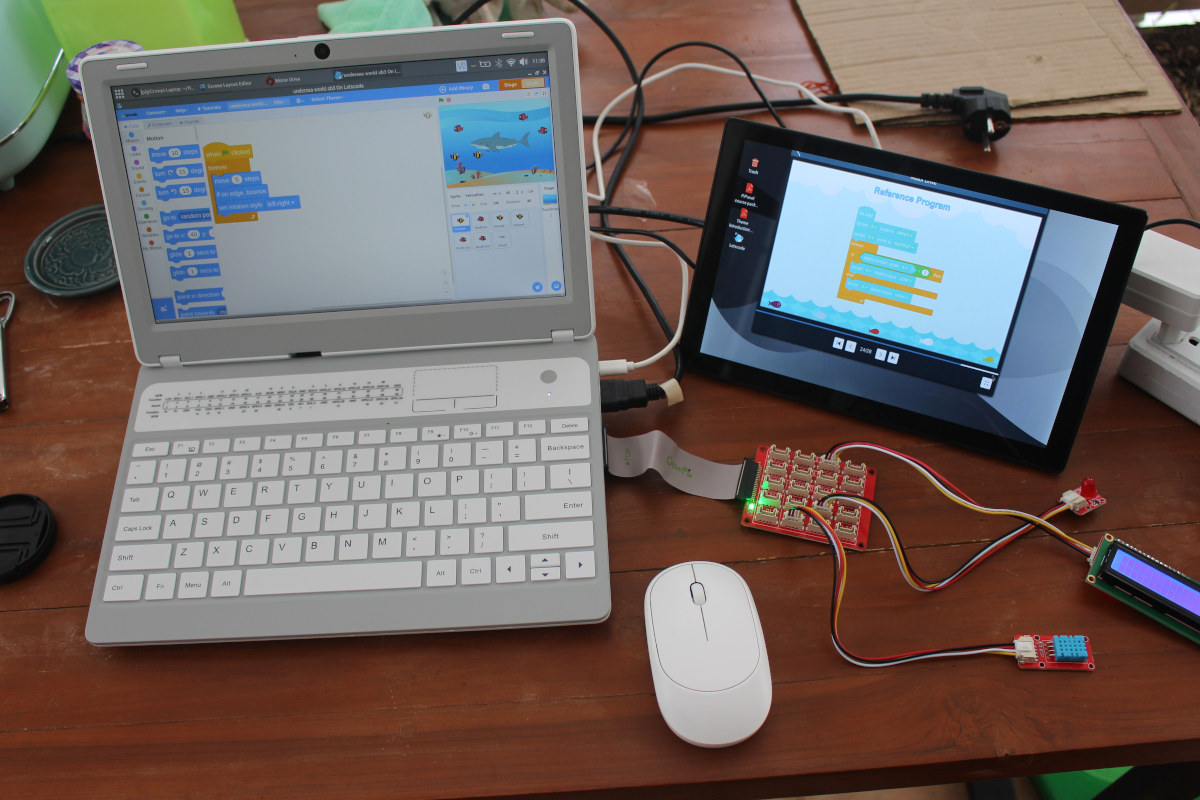It’s now much easier to AI features to your project thanks to better tools, but as we’ve experienced when trying out Edge Impulse machine learning platform on the XIAO BLE Sense board, it still requires some effort and the learning curve may be higher than some expect. But for common tasks like face detection, there’s no reason for the solution to be hard-to-use or expensive, and Pete Warden (Useful Sensors) has designed the $10 Person Sensor fitted with a camera module pre-programmed with algorithms that detect nearby faces and reports the results over an I2C interface. Person Sensor specifications: ASIC – Himax HX6537-A ultra-low-power AI accelerator @ 400 MHz with 2MB SRAM, 2MB flash Camera Image Sensor – 110 degrees FOV Image scan rate – 7Hz with no facial recognition Image scan rate – 5Hz with facial recognition active Host interface Qwiic connector for the I2C interface up to […]
The BBC has released a new web-based Python editor for the micro:bit board
There are already Python editors such as Thonny, but the BBC thought those were not good enough and released a new web-based Python editor specifically designed for the micro:bit education board targeting 11 to 14 years old pupils. The micro:bit Python editor includes drag and drop code examples, code structure & error highlighting, auto-complete feature, a simulator to test the code before uploading it to the micro:bit board, and a Quick ideas section to help pupils get started with projects. The BBC’s micro:bit Python editor works with both the micro:bit V1 and V2, but note the simulator shows a micro:bit V2, so if you are using the previous generation micro:bit, some code may work on the simulator but not on your micro:bit V2 board. For that reason, the BBC marked the code that only works on a micro:bit V2 with ‘V2’ in the Reference section. While the BCC is a […]
Orange Pi 800 Keyboard PC – A Raspberry Pi 400 alternative powered by Rockchip RK3399
There’s now a Raspberry Pi 400 alternative with the Orange Pi 800 Keyboard PC that offers a very similar design, but it is powered by a Rockchip RK3399 hexa-core Cortex-A72/A53 processor. Like the Raspberry Pi model, the Orange Pi 800 comes with 4GB RAM, Gigabit Ethernet, dual-band WiFi 5 and Bluetooth 5.0, two USB 3.0 ports, and one USB 2.0 port, but it also adds 64GB on-board flash storage and features one full-size HDMI port capable of 4Kp60 resolution plus a VGA port, instead of two micro HDMI ports. Orange Pi 800 specifications: SoC – Rockchip RK3399 hexa-core big.LITTLE processor with 2x Arm Cortex-A72 cores up to 1.8GHz, 4x Arm Cortex-A53 cores up to 1.4GHz, and an Arm Mali-T860MP4 GPU System Memory – 4GB LPDDR4 Storage – 64GB eMMC flash, microSD card slot Video Output HDMI 2.0 port up to 4Kp60 VGA port up to Full HD resolution Audio 3.5mm […]
Add 18650 batteries underneath Raspberry Pi with the Red Reactor board (Crowdfunding)
Pascal Herczog’s Red Reactor is a battery power supply project that adds two 18650 batteries to Raspberry Pi 4, Raspberry Pi 3, or Raspberry Pi Zero board using the pogo pins for connection. The pogo pin method means the Red Reactor is attached underneath the board, as such does not prevent the user to add a HAT expansion board on top of the single board computer. There’s also a headerless version for custom setup or compatibility with boards such as Arduino, Banana Pi, Orange Pi, etc… where some soldering is required. Red Reactor’s key features and specifications: Battery holder for up to 2x flat-top 18650 LiPo batteries Battery voltage and current monitoring over I2C (INA219) for software safe shutdown control, system reset, and your own functions Safety Battery protection Resettable fuse protects against discharge between 2 cells Over-Charge, Over-Discharge, and 6A Over-Current protection Host connection Pogo pins for Raspberry Pi […]
Luxonis OAK-D series 2 USB and PoE cameras integrate 3D depth and AI for robotics applications
Luxonis OAK-D Series 2 are the second-generation of USB or PoE cameras with 3D depth and a built-in AI accelerator mostly used for computer vision in robotics applications. We first wrote about Luxonis’ DepthAI module for Raspberry Pi based on the Intel Myriad X AI accelerator in 2019, and later found the module integrated into OpenCV AI Kit Lite, aka OAK-D Lite camera. The second-generation OAK-D cameras replace the module with a Robotics Vision Core 2 (RVC2) “chip-down design” equipped an SoC and Myriad X AI accelerator for up to 4 TOPS of processing power, including 1.4 TOPS for AI inference. Luxonis OAK-D Series 2 specifications and features: Robotics Vision Core 2 based on Myriad X AI accelerator 4 TOPS of processing power (1.4 TOPS for AI) Video encoding – H.264, H.265, MJPEG @ 4Kp3, 1080p60 Computer vision – Warp/dewarp, resize, crop via ImageManip node, edge detection, feature tracking, custom […]
Arducam ToF camera adds depth sensing to Raspberry Pi for $30 (Crowdfunding)
Arducam has launched of Time-of-Flight (ToF) camera module for Raspberry Pi that enables depth sensing by capturing 3D data (at 240×180 resolution) at a distance of up to 4 meters. Arducam has launched several cameras for Raspberry Pi boards over the years, more recently the Arducam Pi HawkEye 64MP camera, but the Arducam ToF camera is quite different, as while it still connects to the MIPI CSI connector of the SBC, it is used to measure distances and depth and display 3D data. Arducam ToF camera specifications: Compatibility – Any Raspberry Pi board with a MIPI CSI connector Effective number of pixels – 240×180 Frame Rate Up to 120 fps (sensor) Up to 30 fps (when processed by a Raspberry Pi using 4-phases RAW frames) Sensor size – 1/6-inch Modulation Frequency – 75MHz/37.5MHz Viewing Angle – 70° Diagonal Light Source – 940nm VCSEL illuminator Output Formats 4-phases RAW Frame Depth […]
myBuddy 280 dual arm robot features Raspberry Pi 4 SBC and ESP32 controllers
Elephants Robotics myBuddy 280, aka myBuddy 280 Pi, is a dual-arm collaborative robot for education with a 7-inch display powered by Raspberry Pi 4 SBC, and also features three ESP32-based M5Stack core modules that help with the internal communication between the motors and the Raspberry Pi board. It builds upon the earlier myCobot 280 Pi robot with a single arm, with the same 280mm working range, but the new robot offers two arms, and a total of 13 degrees of freedom (DoF). The robot is also equipped with two 2MP HD cameras for computer vision, a standard 3.3V expansion I/O interface, a LEGO expansion interface, and can be fitted with a variety of adapters such as suction pumps, grippers, little hands (see below), etc… myBuddy 280 specifications: SBC – Raspberry Pi 4 (2GB or 4GB RAM) single board computer to control the display and communicate with the ESP32 modules IoT […]
CrowPi L Review – Part 2: Learn programming and electronics with a Raspberry Pi 4 laptop
In the first part of our review of CrowPi L Raspberry Pi 4 laptop for education, we checked the hardware and accessories such as the CrowTail starter kit with various sensors and other electronics modules, and showed how to install or remove the Raspberry Pi 4 SBC from the laptop shell. I’ve now had more time to play with the educational software, so I’ll report my experience with the laptop when learning game design and hardware control with Letscode visual programming IDE, as well as the Python lessons for more advanced students. Reinstalling CrowPi OS image It’s the rainy season here in Thailand meaning it’s both hot and humid, and even though I’m not entirely sure it’s related, I recently had to reinstall Raspberry Pi OS on one of my Raspberry Pi with a corrupted SD card. It happened again with the CrowPi L after I left it in its […]


